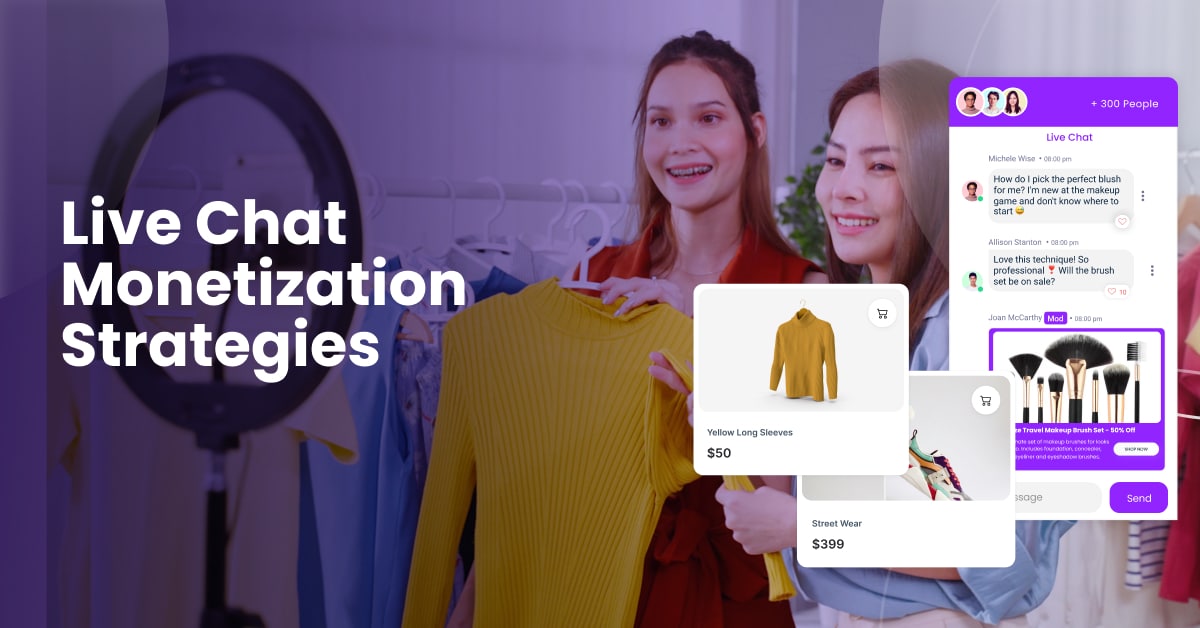In this article, we’ll explore effective CDP integration strategies to help you deliver targeted and personalized content that resonates with your audience.
What is CDP Integration?
CDP integration connects a Customer Data Platform (CDP) with other systems like marketing automation tools, CRM, or content management systems. This process allows you to unify customer data from various sources, creating a single, comprehensive view of each customer.
By integrating a CDP with your marketing automation tools, you can streamline your marketing efforts. This connection enables you to use the rich customer data stored in the CDP to create more personalized and effective marketing campaigns.
Connecting a CDP with your CRM system ensures that all customer interactions and touchpoints are recorded and accessible. This unified data helps you understand your customers better and tailor your communications to their specific needs and preferences.
Integrating a CDP with content management systems allows for more targeted content delivery. You can use the insights gained from the CDP to recommend personalized content to your customers, enhancing their experience and increasing engagement.
In summary, CDP integration is about creating a seamless flow of data between your CDP and other systems. This integration helps you leverage customer data more effectively, leading to better-targeted content campaigns and improved marketing outcomes.

Benefits of CDP Integration for Targeted Content Campaigns
If you’re feeling the pressure to keep up with customer expectations and deliver more personalized experiences, CDP integration could be your game-changer. Let’s dive into why this matters.
Unified Customer View
CDP integration consolidates data from various sources to provide a comprehensive view of your customers. This unified customer view combines information from different touchpoints, such as website interactions, social media activity, and purchase history. By having all this data in one place, you can gain a deeper understanding of your customers’ behaviors, preferences, and needs. This holistic perspective allows you to make more informed decisions and tailor your marketing efforts to better meet customer expectations.
Personalized Content Delivery
Integration with a CDP enables the creation of highly targeted content based on customer preferences and behavior. By analyzing the unified customer profiles, you can identify specific interests and tailor content to match those interests. This means you can deliver personalized recommendations, offers, and messages that resonate with individual customers. Personalized content delivery enhances the customer experience, making interactions more relevant and engaging. This targeted approach not only captures attention but also fosters loyalty and encourages repeat interactions. Discover how CDPs are reinventing customer relations to enhance personalization and engagement.
Improved Campaign Performance
Targeted content campaigns driven by CDP insights lead to higher engagement and conversion rates. When you use data-driven insights to craft your campaigns, you can ensure that your messages reach the right audience at the right time. This precision reduces the likelihood of wasted efforts on uninterested audiences and increases the chances of converting prospects into customers. With a CDP, you can track the performance of your campaigns in real time, allowing for quick adjustments and optimizations. This continuous feedback loop helps you refine your strategies and achieve better results over time. Learn how to use CDP to improve conversion rates and streamline your marketing efforts.
In summary, integrating a CDP into your marketing ecosystem offers significant benefits for targeted content campaigns. A unified customer view, personalized content delivery, and improved campaign performance are just a few of the advantages that can help you create more effective and impactful marketing efforts.
How Does CDP Integration Enhance Content Personalization?
Integrating a Customer Data Platform (CDP) into your strategy can greatly improve content personalization. By unifying customer data, you gain valuable insights into individual preferences and behaviors.
Use CDP Data for Personalization
With a CDP, you can create content that truly resonates with each customer. Using the data collected, you can:
- Customize website content based on a user’s browsing history.
- Send targeted emails featuring products or services that match their interests.
- Offer personalized recommendations aligned with past purchases.
This level of personalization makes customers feel seen and understood, increasing their engagement with your brand.
Impact on Customer Experience
Personalized content enhances the customer experience by making interactions more relevant. When you provide content that aligns with their needs, customers are more likely to:
- Stay longer on your site.
- Make repeat purchases.
- Recommend your brand to others.
By integrating a CDP, you’re not just collecting data—you’re using it to build stronger relationships with your customers, leading to increased satisfaction and loyalty.
How Does CDP Integration Work?
Now, you might be concerned about how this all comes together and whether it’s worth the effort. Let’s break down the process so it feels less daunting.
CDP integration starts with collecting and unifying customer data from various sources. This includes data from websites, mobile apps, social media, CRM systems, and more. The CDP aggregates this information into a single, comprehensive customer profile, ensuring all data points are connected and accessible.
Integrated systems then access these unified customer profiles to create targeted content. Marketing automation tools, CRM platforms, and content management systems can pull data from the CDP to tailor messages and content to individual customer preferences and behaviors. This targeted approach ensures that each customer receives relevant and personalized content, enhancing engagement and conversion rates. Find out how to connect marketing campaigns using CDP insights.
The CDP continuously updates customer profiles based on new interactions and data points. As customers interact with your brand, whether through purchases, website visits, or social media engagement, the CDP records these actions and updates the profiles in real-time. This dynamic updating process ensures that the customer data remains accurate and up-to-date, allowing for more effective and timely content targeting.
In summary, CDP integration involves a seamless flow of data collection, unification, and real-time updates, enabling integrated systems to deliver highly targeted and personalized content to your audience.
Types of CDP Integrations for Content Campaigns
Worried about how to actually implement these integrations? Let’s explore the different types and see which might work best for your needs.
Content Management System (CMS) Integration
Integrating a CDP with your Content Management System (CMS) allows you to offer personalized content recommendations on websites and apps. This integration leverages the unified customer profiles stored in the CDP to tailor content based on individual user preferences and behaviors. When a visitor lands on your site, the CMS can pull data from the CDP to display content that aligns with their interests, browsing history, and past interactions. This personalized approach enhances user engagement, keeps visitors on your site longer, and increases the likelihood of conversions.
For instance, if a user frequently visits pages related to a specific product category, the CMS can prioritize displaying related articles, product recommendations, or special offers. This not only improves the user experience but also drives higher engagement and satisfaction. Additionally, the integration ensures that content updates in real time, reflecting the latest customer interactions and preferences.
Email Marketing Platform Integration
Connecting a CDP with your email marketing platform allows for highly targeted email campaigns based on customer segments and behavior. The CDP collects and unifies data from various touchpoints, creating detailed customer profiles. These profiles can then be segmented into specific groups based on criteria such as purchase history, browsing behavior, and engagement levels.
With this integration, you can craft personalized email campaigns that resonate with each segment. For example, you can send tailored product recommendations to customers who have shown interest in similar items, or re-engagement emails to those who haven’t interacted with your brand recently. The email marketing platform accesses the CDP data to ensure that each email is relevant and timely, increasing open rates, click-through rates, and overall campaign effectiveness.
Moreover, the integration allows for automated email triggers based on real-time customer actions. If a customer abandons their shopping cart, the email platform can automatically send a reminder email with personalized product suggestions, encouraging them to complete the purchase. This level of personalization and automation enhances the customer experience and drives higher conversion rates.
Social Media & Advertising Integration
Integrating a CDP with social media advertising platforms facilitates the creation of personalized social media ads using CDP insights. The CDP aggregates data from various sources, creating comprehensive customer profiles that include demographic information, interests, and online behavior. These profiles can be used to create highly targeted ad campaigns on social media platforms like Facebook, Instagram, and Twitter.
With this integration, you can deliver ads that are tailored to specific audience segments, ensuring that your message reaches the right people at the right time. For example, you can target ads to users who have recently visited your website but haven’t made a purchase, offering them a special discount to encourage conversion. Alternatively, you can create lookalike audiences based on your best customers, reaching new potential customers who share similar characteristics. Understand the differences between CDPs vs. DMPs to choose the right platform for your needs.
The integration also allows for dynamic ad content that updates in real time based on customer interactions. If a user engages with a particular product on your website, the social media ad can display related products or complementary items, increasing the chances of a sale. This personalized approach not only improves ad relevance but also maximizes your return on ad spend.
In summary, integrating a CDP with your CMS, email marketing platform, and social media advertising platforms enables you to deliver personalized content and campaigns that resonate with your audience. This targeted approach enhances engagement, improves campaign performance, and drives higher conversion rates.
CDP Integration Strategies for Targeted Content Campaigns
Feeling a bit overwhelmed? Let’s simplify things by focusing on the strategies that will give you the most bang for your buck.
Define Clear Integration Goals
Start by identifying the specific objectives you aim to achieve with CDP integration. Are you looking to improve customer segmentation, enhance personalization, or streamline data management? Clear goals help you focus your efforts and measure success effectively. For instance, if your primary objective is to boost engagement, you might prioritize integrations that enable personalized content delivery. Defining these goals upfront ensures that your integration efforts align with your broader marketing strategy and deliver tangible benefits.
Prioritize High-Impact Integrations
Focus on integrations that will deliver the most value for your targeted content campaigns. Evaluate which systems, when connected to your CDP, will have the greatest impact on your marketing efforts. For example, integrating your CDP with a content management system (CMS) can enable personalized content recommendations, while connecting it with an email marketing platform can facilitate highly targeted email campaigns. Prioritizing high-impact integrations ensures that you maximize the return on your investment and achieve significant improvements in campaign performance.
Ensure Data Quality and Consistency
Maintaining high data quality and consistency across integrated systems is vital for effective CDP integration. Inaccurate or inconsistent data can lead to misguided marketing efforts and poor customer experiences. Implement data validation processes to ensure that the information collected from various sources is accurate and up-to-date. Regularly audit your data to identify and rectify any discrepancies. Consistent data quality allows you to create reliable customer profiles, which are the foundation of successful targeted content campaigns. Leverage audience data and sales strategy to enhance your CDP integration efforts.
Continuously Measure and Optimize
Track the performance of your targeted content campaigns and optimize your integration strategies accordingly. Use analytics tools to monitor key metrics such as engagement rates, conversion rates, and customer feedback. This data provides insights into what’s working and what needs improvement. Regularly review your integration goals and adjust your strategies based on the performance data. Continuous measurement and optimization help you stay agile and responsive, ensuring that your CDP integration efforts yield the best possible results.
Best Practices for CDP Integration in Content Campaigns
Worried about getting it right the first time? These best practices can guide you through a smoother integration process.
Start with a Pilot Project
Begin with a small-scale integration to test the feasibility and impact. Starting small allows you to identify potential issues and fine-tune the integration process before a full-scale rollout. Select a specific segment of your customer base or a particular marketing channel to implement the pilot. Monitor the performance closely, gathering data on how well the CDP integrates with your existing systems and the effectiveness of the targeted content campaigns. This approach minimizes risks and provides valuable insights that can guide the broader implementation.
Involve Key Stakeholders
Engage stakeholders from different departments to ensure alignment and support. Successful CDP integration requires collaboration across various teams, including marketing, IT, sales, and customer service. Each department brings unique insights and expertise that can enhance the integration process. Organize regular meetings to discuss goals, share progress, and address any concerns. Ensuring that all stakeholders are on the same page helps in creating a cohesive strategy and fosters a sense of ownership and commitment to the project.
Provide Adequate Training
Train marketing and content teams on how to leverage CDP insights effectively. Proper training ensures that your teams can fully utilize the capabilities of the CDP to enhance targeted content campaigns. Develop comprehensive training programs that cover the functionalities of the CDP, data analysis techniques, and best practices for creating personalized content. Hands-on workshops and real-life case studies can make the training more engaging and practical. Continuous learning opportunities, such as webinars and refresher courses, keep your teams updated on new features and strategies.
In summary, starting with a pilot project, involving key stakeholders, and providing adequate training are best practices that can significantly enhance the success of CDP integration in your content campaigns. These steps ensure a smooth integration process, foster collaboration, and empower your teams to create highly effective targeted content.
Best Practices for CDP Integration in Content Campaigns
Worried about getting it right the first time? These best practices can guide you through a smoother integration process.
Start with a Pilot Project
Begin with a small-scale integration to test the feasibility and impact. Starting small allows you to identify potential issues and fine-tune the integration process before a full-scale rollout. This approach minimizes risks and provides valuable insights that can guide the broader implementation.
Involve Key Stakeholders
Engage stakeholders from different departments to ensure alignment and support. Successful CDP integration requires collaboration across various teams, including marketing, IT, sales, and customer service. Ensuring that all stakeholders are on the same page helps in creating a cohesive strategy and fosters a sense of ownership and commitment to the project.
Provide Adequate Training
Train marketing and content teams on how to leverage CDP insights effectively. Proper training ensures that your teams can fully utilize the capabilities of the CDP to enhance targeted content campaigns. Continuous learning opportunities keep your teams updated on new features and strategies.
Is CDP Integration Worth It for Targeted Content Campaigns?
Still on the fence? Let’s talk about why CDP integration is a game-changer for your content strategy.
CDP integration offers significant benefits for creating personalized content experiences. By connecting your Customer Data Platform with other systems, you gain a unified view of your customers. This integration allows you to understand customer preferences and behaviors in-depth, enabling you to deliver content that resonates with them. Personalized content experiences lead to higher engagement, as customers feel understood and valued. This level of personalization is difficult to achieve without a CDP, making integration a valuable asset for your content strategy.
Targeted content campaigns driven by CDP insights have proven to deliver higher ROI. When you use data-driven insights to create your campaigns, you can ensure that your messages are relevant and timely. This relevance increases the likelihood of conversions, as customers are more likely to engage with content that speaks directly to their needs and interests. Higher engagement rates translate to better campaign performance and, ultimately, a higher return on investment. The ability to track and measure the success of your campaigns in real time also allows for continuous optimization, further enhancing ROI. Explore 20 ways to boost results with CDP to enhance your marketing efforts.
The long-term value of CDP integration outweighs the initial investment and effort. While integrating a CDP with your existing systems may require an upfront investment, the benefits you gain over time make it worthwhile. The ability to create personalized content experiences and drive higher ROI through targeted campaigns provides a competitive edge. Additionally, the continuous updating of customer profiles ensures that your data remains accurate and actionable, allowing you to adapt to changing customer behaviors and preferences. This adaptability is crucial in maintaining relevance and achieving long-term success in your marketing efforts.
Engage your audience like never before with Arena’s powerful live chat and real-time engagement tools. Sign up now to boost interaction, build community, and elevate your brand experience. Visit Arena’s pricing page to get started today.



